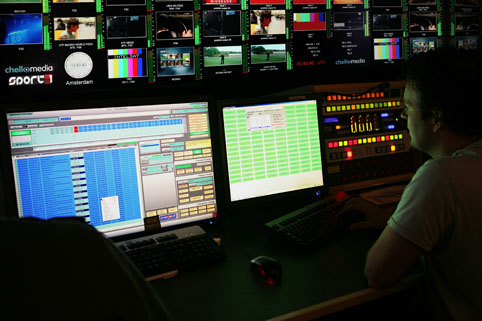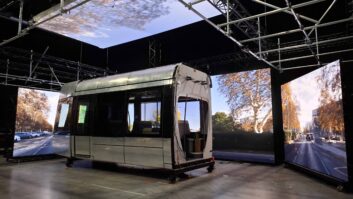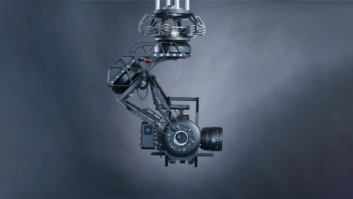The way broadcasting works has not changed massively since the earliest days of television. Programmes are pre-recorded and then transmitted or broadcast live, either from a studio or a location away from the TV centre. This basic form of operation has sustained but also developed over time as new technologies appeared and made the production chain more integrated, seamless, efficient and, increasingly, automated.
How we describe operations has also changed. Workflows are now the means of getting signals through a facility and out to the viewers, who will be watching on a variety of platforms and devices. Similarly, remote broadcasting now applies to a variety of broadcast scenarios, from traditional outside broadcasts (OBs) to running programmes or facilities from someone’s office rather than a studio or technical area and, of course, working from home.

The shift to remote broadcasting and broadcast operations was already underway prior to 2020 but the onset of Covid-19 caused it to accelerate dramatically, during the pandemic and in the years since. To facilitate this, engineers and operators have developed innovative ways to manage workflows outside of the Master Control Room (MCR), the traditional heart of TV stations. The MCR, also known as the Network Operations Centre (NOC), handles both incoming sources and outgoing transmissions, with a team of specialist operators ensuring that the former get to where they are meant to go and the latter meet standards for technical compliance and go to the correct destinations.
The rapid and significant evolution of remote broadcasting has been made possible through the application of software-based technologies to ensure seamless operations. Engineers now have access to powerful multiviewers that provide low-latency access to critical broadcast sources in a wide variety of different standards and protocols, including SMPTE ST 2110, SDI (Serial Digital Interface), SRT (Secure Reliable Transport), NDI (network device interface), and TSoIP (Transport Stream over IP). These tools allow operators to monitor and control feeds in real time, mirroring the functions traditionally performed in physical MCR/NOC environments.
A key component of these modern toolsets is the software-based multiviewer, which enables engineers to manage and observe mosaic streams so they can maintain and ensure control of high-quality transmissions. The crucial functionality of these systems is the ability for users to interact dynamically with individual video sources, which increases operational flexibility.

This capability made it possible for technical operators to work from home during the pandemic, carrying out their jobs as they would have done in the MCR, which was still operational but with only a skeleton staff to keep it running. While MCRs and NOCs went back to full-strength after the worst of Covid was over, the technologies and techniques that were vital during the crisis continued to develop and be implemented.
Through this the next logical step and ultimate goal should be the ‘MCR at home’. This is, understandably, a contentious proposition but one that – as broadcasting continues to embrace remote working and streaming workflows, particularly with a new generation of operators and engineers who grew up with virtualised, remote interaction – promises considerable advantages both operationally and commercially.
Any objections to the concept are probably due to the term ‘MCR at home’ itself, which has an almost clickbait element to it and does not properly convey the reality of this way of working. It does not mean that people will convert their lounges, installing multiple TV screens on the wall. Nor does it mean broadcasters will start running as completely decentralised shell companies with everyone working from home. There will still be premises for TV stations but those in key technical roles, such as engineering managers, who like the flexibility of not being on-site all the time, will be able to oversee operations remotely.
The transition to having more key personnel away from a conventional MCR or NOC, but with access to all the systems and information they would have there, is not merely adapting to new circumstances but an opportunity to refine and enhance operational efficiency through the consolidation of remote tools. The essential requirement that will enable this are workflows and devices with low-latency access. In addition to this, interactivity across video feeds, metadata panels and data streams can better simulate the traditional operational experience, while also reducing the time it takes to resolve any problems that occur during live broadcasts.

It will be possible to enable virtualised MCR workflows along these lines through cloud-based control, giving access to transmission systems from any location. Operators will work on their laptops, monitoring integrated dashboards displaying critical metadata, including signal health, transmission details and compliance status. Such a vision for fully replicated remote-based MCRs is not merely about remotely accessing feeds but creating a unified platform with an intelligent toolset that gives engineers a holistic overview of operations.
Whether this means the end of the MCR is debatable and something that may still be a way off yet. But it is certainly possible because we are already seeing the alternatives through current remote technology. This is based on a great deal of automation, including exception-based monitoring. It could also be that a smaller MCR or NOC of some description will still exist, with remote operators connected to it.
Either way, facilities and developers like Mediaproxy are actively working on the concept of the MCR at home. The monitoring platforms and multiviewers to enable it are currently available and allow engineers to maintain high standards of broadcast control from anywhere in the world. This decentralised approach was not just a temporary adjustment to cope with extraordinary circumstances. It is now the blueprint for a future where media professionals operate seamlessly beyond the limitations of geography.







